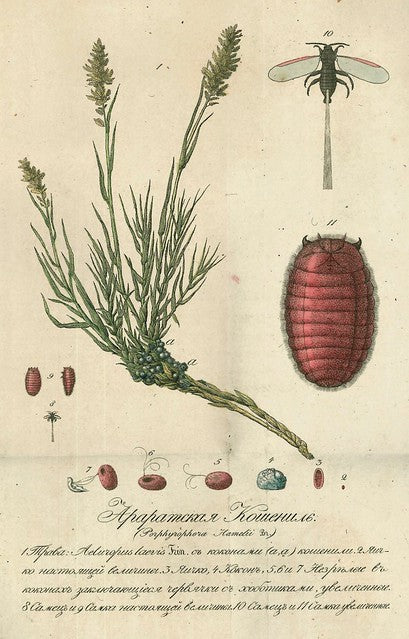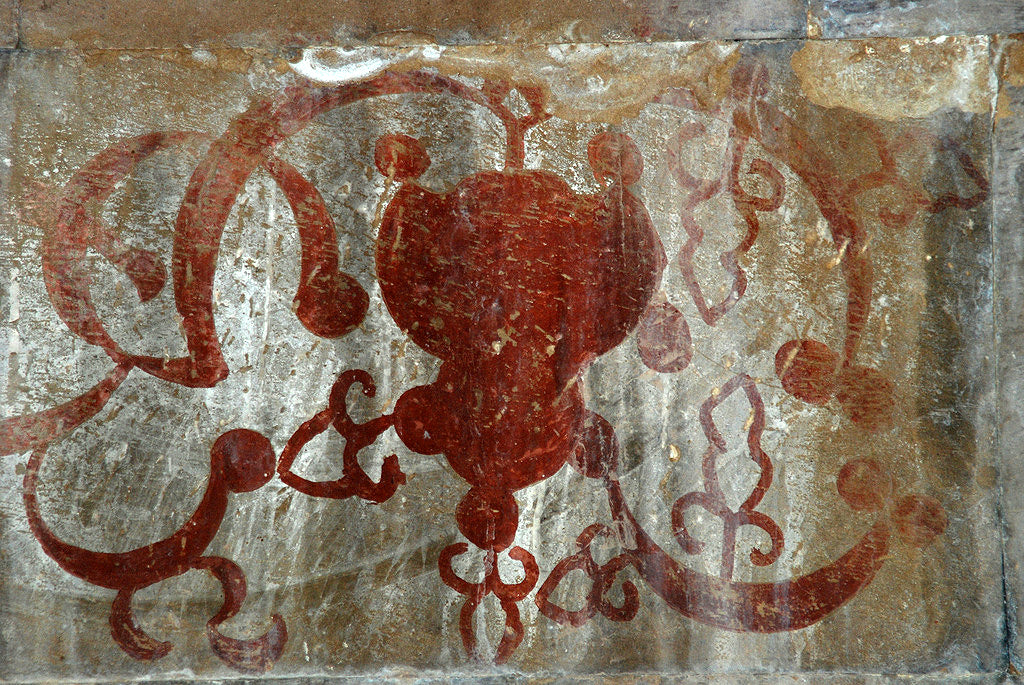The Armenian tradition of textile design is one of the oldest in the world. For centuries, its dyes have been prized for their vibrant colors and durability. The primary strength of Armenian know-how in this sector is the selection of unique raw materials, and the treatment applied to them to extract the pigments.
ANCESTRAL KNOW-HOW ORIGINATING IN ARMENIA
The most famous of these is the Armenian cochineal, also called “Porphyrophora hamelii”, which offers one of the most brilliant reds. Its extraction is extremely meticulous; it can only be harvested at the dawn of autumn, in the semi-arid areas surrounding Lake Sevan and Mount Ararat, by selecting adult females with the highest carminic acid content. From this comes the name that was given to the deep red that results from the process, “Karmin”. In order to preserve this acid, which gives all its beauty to the color, the insects were quickly dried in the sun, also allowing efficient grinding, the cochineals contracting on them as they dried.

Before the color can be extracted, each insect will be individually cleaned to remove any impurities. Also relying on a perfect proportion between the extracted pigments and their binder, this technique requires weighing the insects before grinding them, and precisely assessing the quantity of acids they contain. Once all these steps have been completed, it's time for grinding; most often placed in a stone mortar, the insects were delicately pressed and crushed so as not to deteriorate the quality of the pigment. A fine red powder is then obtained, concentrated carminic acid.
In order to prepare the pigment for its various uses, it had to be filtered and fixed. After mixing the powder with a liquid solution, most often vinegar, and heating the resulting mixture, it was filtered to remove any remaining residue. To this finally obtained concentrate, a bright red, a mordant such as alum was added to fix it and guarantee a color that would defy time.
© Joseph Christian Hamel


Kachkars, Geghard Monastery ©Vahag | Wall art, Noravank Monastery ©Vaghinak Petrosyan
This ancient know-how has survived the ages, exported throughout the world via the Silk Roads. The resulting textile dyes, whether wool, silk, or linen, were admired for their brilliance and resistance to fading and aging. While technological advances have weakened this technique, and its application has become rare, numerous projects are being undertaken to ensure its continued use in Armenian cultural heritage and to rehabilitate it for contemporary uses, as evidenced by recent projects at the History Museum of Armenia.

